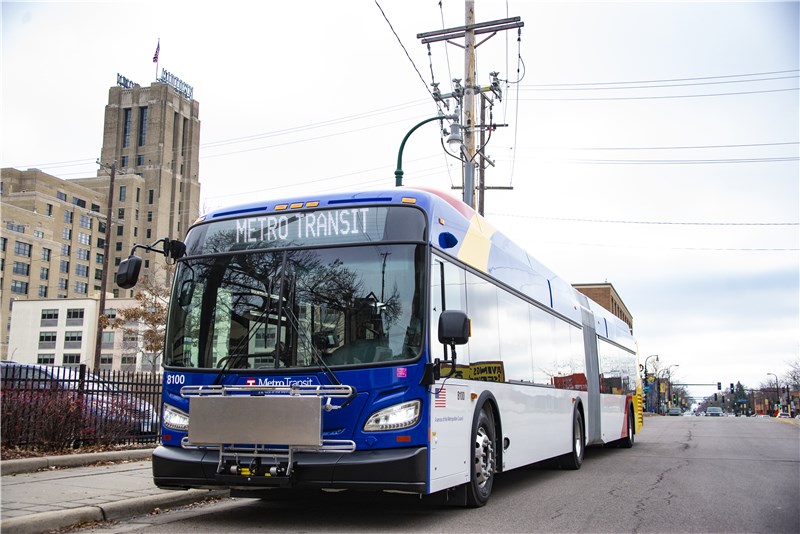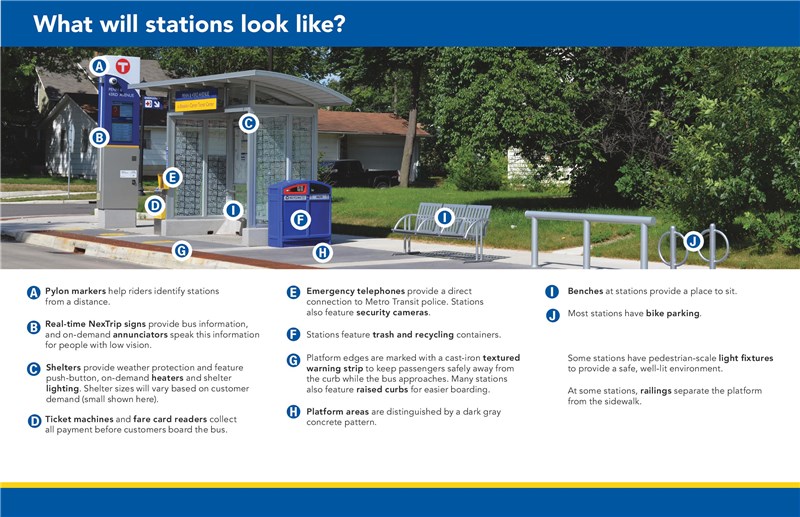Frequently Asked Questions
What is the METRO B Line?
The METRO B Line is a planned bus rapid transit line, like the A Line and C Line, that will provide faster and more reliable transit service in the Route 21 corridor along Lake Street, Marshall Avenue, and Selby Avenue.
Why was the Route 21 corridor selected for bus rapid transit service?
Before the pandemic, customers took more than 10,000 daily rides on Route 21, making it Metro Transit’s second busiest bus route. Buses carry approximately 20% of people traveling on Lake Street but make up less than 2% of vehicle traffic. Lake Street is also one of the slowest transit corridors in the region. During rush hours, buses move at an average speed of 8 miles per hour. Frequent stops, lines of customers waiting to board, and red lights mean that buses are moving less than half the time.
Previous studies in 2012 and 2014 found that enhanced bus service in the Lake Street corridor would perform well in the corridor. In 2016, this corridor was identified as the B Line project and slated to become the region's fourth arterial bus rapid transit line.
How much faster will B Line service be compared to Route 21?
The goal of the B Line is to make service approximately 20% faster than current travel time by stopping less often, allowing customers to board faster, and stopping at fewer red lights. Similar travel time improvements have been achieved on the A Line.
How will future bus service levels compare with today's Route 21?
Based on our preliminary recommendations, B Line service would run every 10 minutes, seven days a week during the day and most of the evening.
Local service on Route 21 would operate every 30 minutes on the portion between Hennepin Avenue and Minnehaha Avenue, where ridership is highest and more bus service is most needed.
A new local bus, Route 60, would run every 30 minutes along Selby Avenue and connect to the Midway area of St. Paul. Planning for bus service will continue as the B Line is designed and built.
What will be the frequency and hours of service?
The B Line will provide frequent service all day on weekdays, Saturdays and Sundays. Exact schedules and service plans will be formed through project development.
What will B Line buses look like?

The B Line will use recognizable 60-foot "articulated" buses with wider aisles, more seating capacity and additional doors so more people can get on and off easily. B Line customers should feel less crowded and more comfortable as they travel.
How will fares be collected on the B Line?
B Line customers will pay before boarding for faster stops using ticket machines and validators at the station or the Metro Transit’s app on their smartphone. Customers enter the bus through any door, speeding up the boarding process. Metro Transit Police officers will check fare payment.
What features will B Line stations include?

B Line station features include:
• Real-time NexTrip signs with on-demand audible announcements
• Shelter lighting
• Push-button heating
• Containers for garbage and recycling
• Security cameras
• Emergency telephones
• Benches
• Bike parking
How is the project funded?
The B Line is fully funded through a mix of federal, state, and Metropolitan Council funds. The preliminary estimated cost of the project is $65 million. Cost estimates will be further refined as the project is developed.